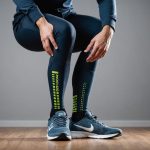In the rapidly advancing world of healthcare technology, biosensing wearables have emerged as a game changer in chronic disease management. By providing real-time monitoring data, these devices enhance our understanding of our bodies and allow us to take proactive measures towards ensuring overall health. In the scope of this article, we are going to delve into the specifics of these innovations, focusing on the development of wearables that monitor glucose levels in sweat, electrode-based devices, and other sensing technologies.
Biosensing Wearables: A New Era of Health Monitoring
Biosensing wearables are increasingly becoming an integral part of our healthcare landscape. These devices, equipped with sensors, collect and analyze various health data to monitor body functions such as heart rate, blood pressure, sleep patterns, and more. Recently, the focus has been on wearables that can monitor glucose concentrations in sweat, a revolutionizing advancement in the management of chronic conditions like diabetes.
Cela peut vous intéresser : What’s the Latest in Energy Harvesting Technologies for Wearable Devices?
The usefulness of health wearables lies in their ability to provide real-time data on your body’s functions. This real-time monitoring is highly beneficial for chronic disease management, where timely intervention can prevent severe health complications. Furthermore, the data collected from these devices can be shared with healthcare providers, enabling personalized treatment plans based on the individual’s unique health status and needs.
Glucose Monitoring Through Sweat: A Lifesaver for Diabetics
One of the most significant breakthroughs in biosensing wearables is the development of devices that can monitor glucose levels in sweat. Sweat is a biofluid that reflects the body’s glucose concentration, providing a non-invasive method of monitoring blood glucose levels.
A lire aussi : Can Deep Learning Algorithms Improve the Detection of Deepfakes?
Ordinarily, people with diabetes have to prick their fingers several times a day to check their blood glucose levels. However, with sweat glucose monitoring, they can have continuous, real-time updates of their blood glucose levels without any invasive procedure. This is a significant advantage for those with diabetes, a disease that requires constant and vigilant monitoring.
A clinical study published in 2023 demonstrated the reliability and accuracy of sweat-based glucose monitors. The study used a wearable biosensor that measured glucose concentrations in sweat and accurately reflected blood glucose levels. This technology has the potential to transform diabetes management, making it easier and more comfortable for patients.
Electrode-Based Devices: Gaining Popularity
Another exciting advancement in biosensing wearables is the development of electrode-based devices. These electronics are designed to measure the electrical activities of various body systems. They are wearable, lightweight, and come equipped with sensors that collect data and transmit it to your smartphone or other connected devices.
Electrode-based devices have been developed for monitoring heart rate, muscle activity, and even brain activity. The data collected from these devices can be incredibly useful for managing chronic diseases. For instance, an irregular heart rhythm detected by these devices could be a sign of a potential heart condition. Such timely detection can allow for immediate medical intervention, preventing major health complications.
Sensing Technologies: Paving the Way for Future Innovations
The successful implementation of biosensing wearables in healthcare relies heavily on the development of advanced sensing technologies. One such promising technology is the use of nanomaterial-based sensors. These sensors are incredibly small yet very sensitive, making them ideal for detecting subtle changes in the body’s biochemistry.
One of the exciting developments in this area is the use of nanosensors to detect changes in the concentration of specific molecules. For instance, increased levels of a certain protein in sweat could indicate the onset of a disease even before symptoms become apparent. This early detection could allow for prompt treatment, greatly improving the chances of recovery.
In conclusion, biosensing wearables are revolutionizing healthcare by providing real-time health data and enabling proactive disease management. Innovative developments in this field, such as sweat glucose monitoring and electrode-based devices, offer promising solutions for managing chronic conditions. Furthermore, advancements in sensing technologies, including the use of nanosensors, are creating new possibilities for early disease detection and treatment. As these technologies continue to evolve, we can look forward to a future where managing chronic diseases is more efficient and less invasive.
Google Scholar and Crossref: A Treasure Trove of Biosensing Research
Google Scholar and Crossref, two renowned academic databases, offer a wealth of scientific papers exploring the development and application of wearable biosensors. As real-time health monitoring devices, wearable biosensors have demonstrated significant potential in managing chronic diseases such as diabetes and heart conditions.
The reprinted permission articles from these scholarly databases provide invaluable insights into the current trends and future prospects of wearable technologies. For instance, numerous studies have been dedicated to exploring sweat biosensors, which can monitor glucose concentration in sweat, offering a non-invasive alternative to traditional blood glucose testing methods. These biosensors continuously monitor glucose levels, delivering real-time updates and data to the user or their healthcare provider.
Electrode-based wearable devices have also been a hot topic on Google Scholar and Crossref. These devices measure the electrical activities of the body, such as heart rate, muscle activity, and brain waves. Their continuous monitoring capabilities can help detect irregular patterns, enabling timely medical intervention.
Looking towards the future, many researchers are focusing on low-cost, nanomaterial-based sensors. These wearable sensors, despite their tiny size, are extremely sensitive, capable of detecting minute biochemical changes in the body. This exciting development points towards a future where early disease detection and prompt treatment could become the norm rather than an exception.
Conclusion: Wearable Technologies at the Forefront of Chronic Disease Management
In conclusion, biosensing wearables are opening up new horizons in healthcare. The continuous monitoring of vital health parameters like blood glucose levels and heart rate has empowered individuals to take a proactive role in managing their health. Furthermore, healthcare providers can devise personalized treatment protocols based on real-time data, enhancing the effectiveness of interventions.
The advent of glucose monitoring through sweat has been a beacon of hope for diabetics, offering a less invasive and more comfortable way of managing their condition. The development of electrode-based devices has also made waves in the healthcare field, with their ability to monitor various body systems’ electrical activities.
Sensing technologies, particularly nanosensors, are setting the stage for future developments. Their incredible sensitivity to subtle biochemical changes could potentially allow for early disease detection, paving the way for prompt and more effective treatments.
As exciting as these developments may be, it’s important to remember that we are still in the early stages of this technological revolution. There is much to learn and even more to explore. However, as we continue to advance and refine these technologies, we can look forward to a future where managing chronic diseases becomes more efficient, less invasive, and ultimately, more successful.






